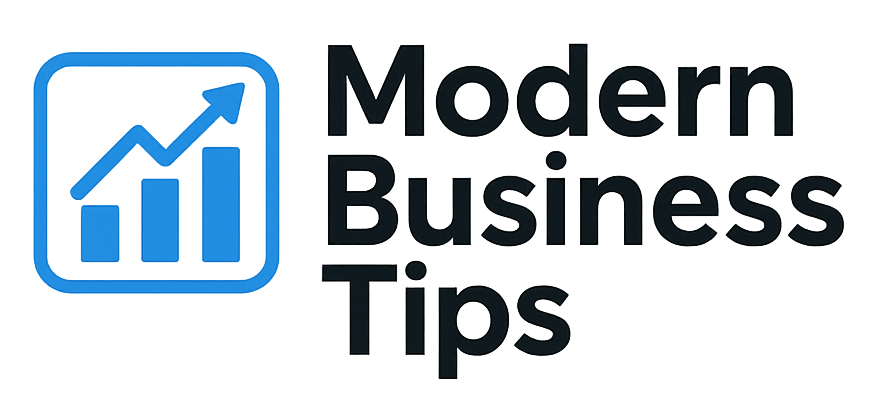Did you know that about 70% of businesses fail because they don’t have clear goals? This shows how important goal planning is for e-commerce success. Without clear goals, businesses can lose their way and miss out on growth chances. Using SMART goals for e-commerce—Specific, Measurable, Achievable, Relevant, and Time-bound—can help. This method makes setting goals easier and gives businesses the direction they need to succeed.
In this article, I’ll explain why SMART goals are key for e-commerce growth. I’ll show you how to set and reach these strategic goals. My goal is to give you insights that can improve your e-commerce operations.
Key Takeaways
- Understanding SMART goals is essential for effective goal-setting.
- Clear objectives provide direction and measurable outcomes for e-commerce businesses.
- SMART goal planning can significantly enhance e-commerce growth potentials.
- Structured approaches encourage accountability and tracking of progress.
- Innovative strategies are key for adapting to market changes.
Introduction to SMART Goals for E-commerce
Starting in e-commerce, I’ve learned about SMART goals. They are clear and actionable, key for business strategies. Knowing SMART goals helps focus on measurable results for success.
What are SMART Goals?
SMART goals are specific, measurable, achievable, relevant, and time-bound. This helps set clear directions and expectations. For e-commerce, SMART goals lead to better planning and execution.
By using this method, businesses can reach goals that are both challenging and achievable.
Importance in E-commerce Strategy
SMART goals are very important in e-commerce. They provide a structured base for planning and resource use. An effective strategy with SMART goals improves performance and innovation.
It also boosts profitability, making SMART goals essential for e-commerce success.
| SMART Criteria | Description | Impact on E-commerce |
|---|---|---|
| Specific | Clear and well-defined objectives | Reduces ambiguity and focuses efforts |
| Measurable | Criteria for tracking progress | Enables performance assessment |
| Achievable | Realistic and attainable targets | Builds team motivation and commitment |
| Relevant | Aligns with broader business goals | Ensures consistency and cohesion |
| Time-bound | Defined deadlines for reaching goals | Encourages urgency and accountability |
Specific: Defining Clear Objectives
Setting specific objectives for e-commerce means creating clear, measurable goals. These goals should match what customers want and what the market needs. This focus helps guide business operations.
Knowing what my target audience needs helps shape my strategy. This ensures my efforts speak to my customers.
Identifying Target Audience Needs
It’s important to understand what my target audience needs. I do this by surveying, analyzing purchases, and studying trends. This helps me create products and marketing that really connect with my customers.
This approach lets me offer what people want to buy. It directly addresses their needs and problems.
Product Focus: Which Items to Promote?
Choosing the right products to promote is vital for sales and engagement. I pick items that match what my customers like. For example, if green products are popular, I aim to boost their sales by 20% in a quarter.
This focus makes my marketing more effective. It also ensures my promotions have the biggest impact.
Measurable: Tracking Progress
Knowing how to measure progress is key for any e-commerce strategy. Measurable SMART goals help track performance. This lets business owners see how they’re growing. They can use specific Key Performance Indicators (KPIs) for e-commerce to understand their performance and tweak strategies.
Key Performance Indicators (KPIs) to Monitor
To track e-commerce success, it’s important to focus on certain KPIs. Here are some key ones to watch:
- Conversion Rate: The percentage of visitors who buy something.
- Average Order Value: The average amount spent per transaction.
- Customer Acquisition Cost: The cost of getting a new customer.
- Cart Abandonment Rate: The percentage of customers who leave items in their cart without buying.
Tools for Measuring Success
Many tools help measure e-commerce success. They let me keep an eye on my measurable SMART goals. Some top choices include:
| Tool | Features | Best For |
|---|---|---|
| Google Analytics | Traffic analysis, goal tracking, e-commerce tracking | Comprehensive data insights |
| Shopify Analytics | Sales tracking, customer reports, marketing analytics | Shopify stores |
| SEMrush | SEO tools, traffic analysis, competitive research | Improving visibility |
Achievable: Setting Realistic Expectations
In the fast-paced world of e-commerce, setting achievable SMART goals is key. These goals should be based on what you can do with your resources. Looking at past performance helps you know what’s possible and what’s not.
When setting goals, it’s important to keep them realistic. This way, each goal is a challenge but not impossible to reach.
Assessing Resources and Capabilities
Starting with a thorough check of what you have is essential. Your budget, team, and tech are all important. Without looking at these, your goals might be too high.
By understanding these, you can make sure your goals match what your business can do.
Case Studies of Achievable Goals
Looking at case studies can teach you a lot about e-commerce goals. Some brands improved operations to better serve customers. Others boosted engagement with smart marketing.
These stories can guide you in setting your own goals. For more ideas, check out this guide. It shares successful strategies from different places.
Relevant: Aligning Goals with Business Mission
Setting SMART goals means making sure they match my brand’s mission. This mission is like a guiding star for me in e-commerce. It helps me stay focused and create a strategy that my team and customers can get behind.
Ensuring Goals Support Brand Vision
Every goal I set must support my brand’s vision. It’s important to keep my goals in line with my business’s core values and long-term plans. This focus helps build customer loyalty.
For example, if my brand cares about the environment, my goals should reflect that. This way, I connect with customers who share those values.
Adapting Goals to Market Trends
Keeping up with e-commerce changes is key. I watch for new consumer habits and tech advancements to adjust my plans. Setting SMART goals isn’t just about making sales; it’s about understanding what customers want and what the competition is doing.
If more people want personalized shopping, I need to make that a goal. This helps me stay ahead in the market.
| Aspect | Brand Mission Alignment | Adapting to Market Trends |
|---|---|---|
| Focus | Core values and long-term objectives | Emerging consumer behaviors |
| Objective | Foster customer loyalty | Enhance competitive edge |
| Example | Integration of sustainability practices | Personalized shopping experiences |
By focusing on aligning goals with my brand mission and adapting to market trends, I can drive growth in my e-commerce business.
Time-bound: Creating Timelines for Success
Setting time limits is key to success in e-commerce. Time-bound SMART goals help me focus on achieving goals quickly. They make me set deadlines, which keeps me on track and motivated.
Having clear milestones is vital. It lets me check my progress, which is important during busy times.
Planning Milestones and Deadlines
Good planning means breaking big goals into smaller steps. Setting specific deadlines helps me track my progress. This way, I can see what needs to be done at each stage.
Regularly checking these milestones keeps me on track. It also helps me adjust if needed.
Importance of Timeframes in E-commerce
Timeframes are essential for e-commerce success. Short-term goals motivate me, while long-term goals give me room to innovate. During busy times, clear timeframes help me manage resources better.
This leads to smoother operations and happier customers. When everyone knows the importance of deadlines, we all work better together.
Aligning SMART Goals with E-commerce Metrics
Effective e-commerce strategies rely on aligning SMART goals with key metrics. This ensures I can measure the success of my plans and make needed changes. I concentrate on two main areas: understanding conversion rates and analyzing customer engagement. This approach gives me a full picture of how my strategies work in the e-commerce world.
Understanding Conversion Rates
Conversion rates help me see how well my sales funnel works. High rates mean people are interested in what I offer. Low rates show where I need to do better. By tracking this, I learn more about what customers like, helping me improve my marketing and the buying experience.
Analyzing Customer Engagement
Looking at customer engagement gives me insights into how people interact with my brand. Metrics like time on site, page views, and social media interactions tell me what customers like. This information helps me make my strategies more appealing to users, leading to more meaningful interactions and higher conversion rates.
Adapting and Revising SMART Goals
The e-commerce world changes fast, and we must keep up. We need to check if our plans are working well. Making SMART goals flexible is key to success. Knowing when to change them helps us stay on track with what our customers want.
When to Reassess Your Strategy
It’s important to check our plans at key times, such as:
- After quarterly sales performance evaluations
- When introducing new product lines or services
- In response to significant market trends or shifts
- Following customer feedback surveys
At these moments, we can see if our goals are right for our business. This helps us adjust and stay true to our vision.
Flexibility and the E-commerce Landscape
Being flexible in e-commerce means we can change fast. Businesses that are quick to adapt can improve their goals and methods. This requires a culture that welcomes change.
The quicker we adapt, the better we can serve our customers and grow in the market.
Implementing SMART Goals in Your E-commerce Plan
SMART goals turn planning into a real, doable plan for e-commerce. It’s key to have a clear process for each goal. This makes sure everyone feels they’re part of the team, boosting motivation and teamwork.
Creating an Actionable Strategy
To make a real plan, I split each SMART goal into smaller tasks. I list the steps and what we need to do them. Setting deadlines and checking up on progress keeps everyone on track and excited.
A clear plan helps everyone know their part. This makes teamwork better and work more efficient.
Involving Team Members for Success
Team involvement is super important. I hold regular meetings to talk about how we’re doing. This teamwork builds trust and brings out new ideas.
Everyone’s input is valuable. It helps us make a better plan for reaching our SMART goals.
| Actions | Responsibilities | Deadlines |
|---|---|---|
| Define Key Initiatives | Marketing Team | End of Q1 |
| Set Measurement Tools | Analytics Team | Mid Q1 |
| Conduct Monthly Reviews | All Teams | Monthly |
| Adjust Strategies Based on Feedback | Leadership Team | Ongoing |
Using these methods in my e-commerce plan works well. It makes sure everyone knows how they help us succeed together.
Success Stories: Brands that Nailed SMART Goals
SMART goals are key to success in e-commerce. Looking at success stories helps us learn from both big brands and small businesses. We can see what strategies work best.
E-commerce Giants: Lessons Learned
Amazon and Walmart show how SMART goals work. Amazon focuses on making shopping easy for customers. This goal is linked to their success in keeping customers happy and coming back.
Walmart grew its online sales by setting clear goals. They worked on improving how fast they can ship items. This shows how important it is to meet customer needs.
Small Businesses: Achieving Big Results
Small businesses like Birchbox prove the power of SMART goals. Birchbox targets specific customers with smart marketing. This builds strong loyalty to their brand.
Other small businesses adapt to trends to succeed. A boutique might change its products seasonally. This way, they can make the most of current trends. These stories motivate me to find the right strategies for my business.
| Brand | SMART Goal Focus | Results Achieved |
|---|---|---|
| Amazon | Customer satisfaction and user engagement | Increased sales and customer retention |
| Walmart | Online sales growth and inventory management | Improved fulfillment speed and customer experience |
| Birchbox | Targeted marketing to specific demographics | Enhanced brand loyalty and sales |
| Local Boutique | Adapting product line to market trends | Boosted seasonal revenue |
Conclusion: The Future of E-commerce Growth with SMART Goals
The future of e-commerce looks bright with SMART goals. These strategies help drive sales and improve businesses. It’s not just about setting goals; it’s about being open to change and innovation.
Continual Improvement and Innovation
Change is key in the fast-paced e-commerce world. Staying agile helps businesses stay ahead. Using data to improve strategies keeps customers engaged.
Embracing Change in E-commerce Strategies
SMART goals guide me through challenges. Using personalized offers and email marketing boosts growth. An adaptable mindset leads to better sales and loyal customers. For more on this, check out this article and this guide.



